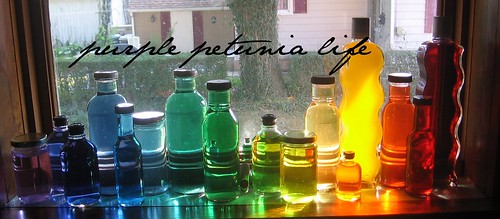Reuben yesterday with my birthday "cupcake on ice cream!"
I wrote this rather slapdash report last week for my Coursera Chemistry mini research paper. If you've been interested in Reuben's kidney disease, well, THIS TREAT IS FOR YOU.
My five year old son Reuben has
Fanconi syndrome, diagnosed during a period of poor growth after
chemotherapy treatment for a synovial sarcoma in his right shoulder.
Fanconi syndrome is a kidney disorder caused by damage to the proximal
tubules in the kidney, in his case from therapeutic use of the drug
ifosfamide [2,3]. The result is a diminished reabsorption of solutes by
the proximal tubule. Clinical manifestations of this disorder can be
more complex, depending on the biological cause of the tubule damage,
but in Reuben's case his symptoms and management are limited to
nutritional electrolyte levels and prevention of acidosis. [1,2]
Reuben
was promptly treated with heavy supplementation of electrolytes and
bicarbonate, and avoided the side effects (rickets from phosphorus and
vitamin D deficiency is one concern) that could be caused by nutritional
deficiency of essential electrolytes [3]. This treatment has continued
for four years. More advanced biochemistry can be applied to the
mechanisms of his renal tubules and the biological effects of these
electrolytes, but I will limit this brief discussion to inorganic
chemistry. As we learned about electrolytic reactions and precipitates
in Week 4, I immediately thought of the precipitates I have observed in
Reuben's urine. "Tell your doctor about cloudy urine" urge parenting
articles, so I asked his nephrologist, who has assured me (from
theoretical knowledge and the urinalysis done regularly) that the
cloudiness in the toilet bowl, what I saw crystalized at the bottom of
his wee toilet during potty training, and the residue I sometimes
observe in his underwear is expected. I'm seeing a solid result of most
of the electrolyte solution I deliver three times daily orally,
processed inefficiently by his damaged kidneys ("It's chemistry in
action!" I told my physician and biologist siblings. Our inner chemistry
geeks were very excited). This paper--and the refreshing of my
20-year-dormant inorganic chemistry skills with this class--gives me the
opportunity to make a prediction exactly what the precipitates are.
I
theoretically know that Reuben likely has excessive urination of many
solutes, including glucose, amino acids, calcium, phosphate, uric acid,
bicarbonate and many organic compounds [3]. I can reasonably conclude,
however, that he is excreting most what he receives most of. His daily
oral supplementation regimen gives him the following, which represents a
massive excess of what his little 43 pound body uses:
*30
mL of CYTRA-2, a formulation that includes sodium citrate and citric
acid in a neutralizing buffer. For the purposes of this paper, I'm going
to ignore the inactive ingredients, and just consider the stated
concentrations in 5 mL aqueous solution: 500 mg Sodium Citrate Dihydrate
and 334 mg Citric Acid Monohydrate. The label states that each mL
contains 1 mEq Sodium Ion and is equivalent to 1 mEq Bicarbonate (HCO3)
[4].
*1 1/2 packets of PHOS-NaK, a powdered
concentrate. Each packet contains (again, just the active ingredients)
160 mg sodium, 280 mg potassium, and 250 mg phosphorus in the form of
potassium phosphate and sodium phosphate.
Calculations:
part 1: the ions
From CYTRA-2: Na+, HCO3 -2 (the sodium citrate and citric acid in the CYTRA-2 are converted to bicarbonate by the liver [7]).
From
Phos-NaK: K+, Na+, PO4 -3 (phosphorus is transported and processed in
the intestine, kidneys, and urine in phosphate form [8]).
Resultant cations: Na+, K+
Resultant anions: HCO3 -2, PO4 -3
part 2: the precipitates
I
expected to discover in this step that one of the resultant ionic
compounds was insoluble, and that would be the precipitate that I
observe, but according to solubility rule #1, "Most compounds of Group 1
metal cations are soluble." Because both of the supplemental cations
are Group 1 metals, I can expect that the possible compounds of the ions
listed above would be primarily in solution. The precipitate I observe
must therefore be the result of an already fully saturated aqueous
solution in Reuben's urine. I predict the following possible electrolyte
salts in excess: Na2HCO3, K2HCO3, Na3PO4, K3PO4 (sodium bicarbonate,
potassium bicarbonate, sodium phosphate, and potassium phosphate).
If
this chapter of my education extends to a laboratory portion of
my chemistry review, I may, in the future, be able to test the accuracy
of the predictions made by my chemical figuring above. I could do
further research on the way the digestive system uses and transforms
elements and their ions to be more accurate in my chemical predictions,
but the above exercise was interesting, and appropriate at my current
chemistry knowledge level. "Fanconi syndrome" describes a class of
disorders whose variable symptoms depend on the cause and extent of the
proximal tubule damage [2]. I would like to know exactly what Reuben's
body disposes of, and how this changes as his body and metabolic needs
grow. More specific research could still be done on the chemistry of
affected patients' urine and blood to see exactly the sort of damage
done to a 6 month old child with high doses of ifosfamide (it was
reported as early as 1974 [3,6]), but I hope that the incidence of cases
remain low enough that such studies cannot be categorically conclusive,
particularly at stages of early development, such as my 6-month old
baby.
Sources cited:
1. "Fanconi Syndrome." Author: Sahar Fathallah-Shaykh, MD; Chief Editor: Craig B Langman, MD. Accessed on web at http://emedicine.medscape.com/article/981774-overview.
2. Discussions with the subject's mother and nephrologists.
3. " Ifosfamide induced Fanconi syndrome." Samantha Buttemer, Mohan Pai2 and Keith K Lau. BMJ Case Rep. 2011; 2011. Accessed on web at http://www.ncbi.nlm.nih.gov/pmc/articles/PMC3246161/
4. Label for Cypress Pharmaceutical, Inc.'s CYTRA-2 oral solution.
5. Label for Cypress Pharmaceutical, Inc.'s PHOS-NaK powder concentrate supplements.
6. "Renal dysfunction after treatment with isophosphamide." DeFronzo RA, Abeloff M, Braine H, Humphrey RL, Davis PJ. Cancer Chemother Rep. 1974 May-Jun;58(3):375-82. Accessed on web at http://www.ncbi.nlm.nih.gov/pubmed/4842666.
7. "Urinary Alkalization" by David S Goldfarb, M.D.(Director, Kidney Stone Prevention Program, St. Vincents Hospital & Professor of Medicine and Physiology, NYU School of Medicine). Accessed on web at http://www.cystinuria.com/articles/urinary-alkalization/.
7. "Urinary Alkalization" by David S Goldfarb, M.D.(Director, Kidney Stone Prevention Program, St. Vincents Hospital & Professor of Medicine and Physiology, NYU School of Medicine). Accessed on web at http://www.cystinuria.com/articles/urinary-alkalization/.
8. "Potassium Phosphate/Pharmacology." Accessed on the web at http://pubchem.ncbi.nlm.nih.gov/summary/summary.cgi?cid=516951#x94





